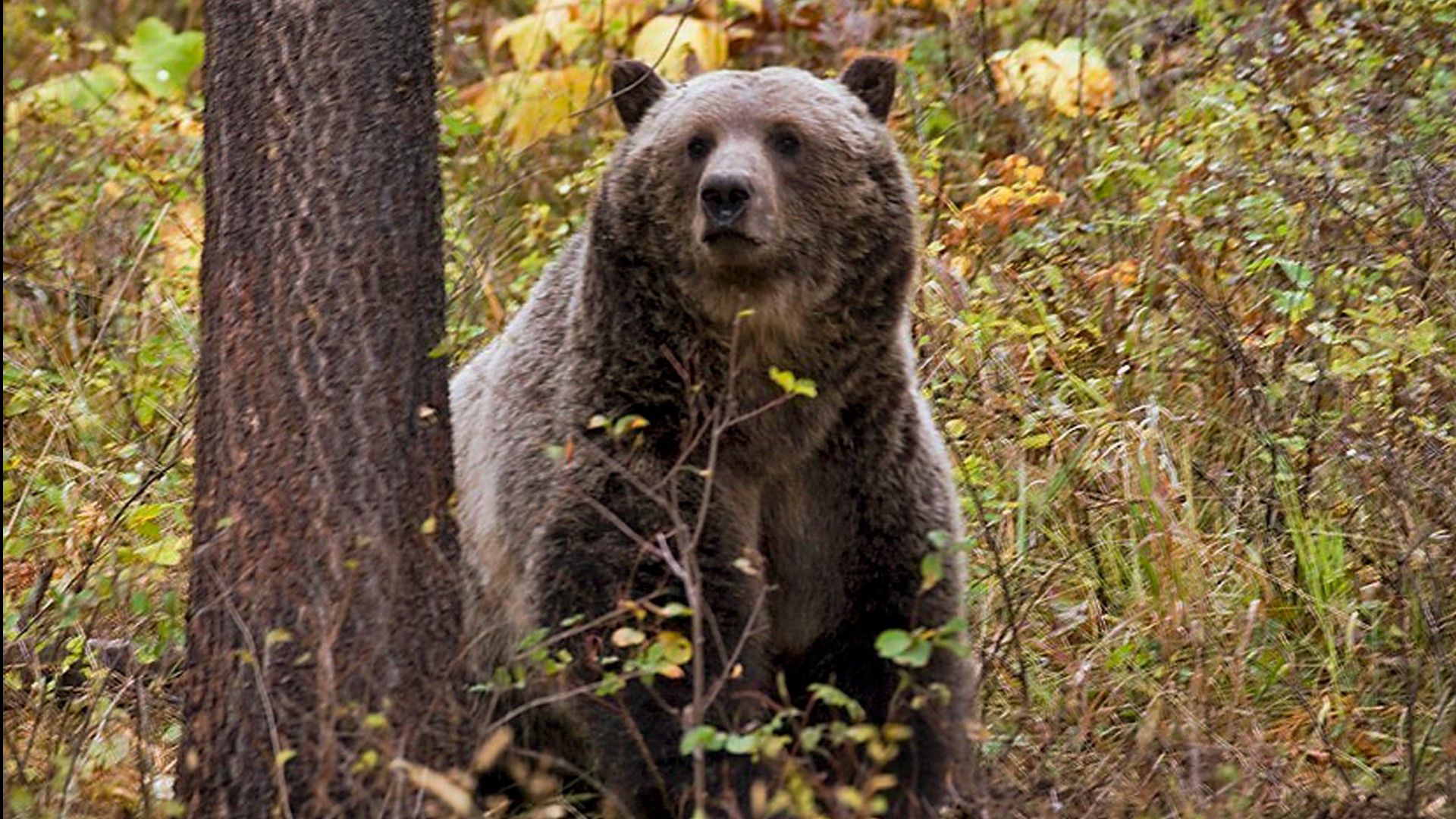SEDRO-WOOLLEY, Wash. — The federal government is seeking public opinion on whether grizzly bears should be restored to the North Cascades ecosystem.
“We are looking for the public’s help in selecting the best path forward as we evaluate grizzly bear recovery on these federal lands,” Don Striker, superintendent of North Cascades National Park, said in a statement.
The public input is being collected by the National Park Service and the U.S. Fish & Wildlife Service. The input is for a draft Environmental Impact Statement that evaluates the options available for the restoration of grizzly bears.
The U.S. Fish & Wildlife Service is also separately inviting public comment on designating grizzlies in the area as an experimental population under section 10(j) of the Endangered Species Act. This would allow communities and land managers flexibility in managing the bears. This would include the relocation, removal, or deterrence of animals involved in conflict.
“If this part of our natural heritage is restored, it should be done in a way that ensures communities, property, and the animals can all coexist peacefully. A 10(j) experimental designation could provide the tools to do that,” said Hugh Morrison, U.S. Fish & Wildlife Service regional director in a statement.
Grizzly bears have existed in the North Cascades Ecosystem for thousands of years, according to the NPS. However, in the 1800s, they were hunted and most of the population was killed by 1860. This, coupled with habitat loss, led to the now state-designated endangered listing of the grizzly bear. From around 2005 to 2015, only two grizzly bears were identified in the North Cascades ecosystem in British Columbia. The last time a grizzly bear was confirmed in U.S. territory of the North Cascades ecosystem was in 1996.
Jason Ransom, the Wildlife Program Lead at the North Cascades National Park Service Complex, said there are three options in the draft EIS. He said one option would result in no action being taken. The two other options would result in 25 grizzly bears being relocated over ten years to the North Cascades. The difference between the two options where grizzlies would be restored to the area is how the bears are allowed to be managed. Ransom said their preference is the option that allows for more flexibility.
"So, that might include, you know, getting bears and moving them back, if they stray outside of where we want them to be," said Ransom.
He said the bears would come from other areas where there are large grizzly bear populations.
"The North Continental divide ecosystem near Glacier National Park is a very strong candidate," said Ransom. "Interior British Columbia in the northern part where there is actually still a good, viable population, and possibly even Yellowstone. And the reason is, those bears come from a very similar food economy, so a plant-based diet."
Ransom added that they want to bring in young bears who are actively trying to go out and establish a home range and learn where they want to live. He also said they would bring in bears that have no history of conflict with people.
There are people both supporting and opposing this plan.
Joe Scott with the group Conservation Northwest has been advocating for grizzly bear restoration in the North Cascades for decades. He said this is one of few habitats in the United States that are sustainable for grizzly bears and that the bears are meant to be there. He said humans are the reason they are no longer in the North Cascades.
"There's a 100-year history of grizzly bear persecution, overhunting, trapping," said Scott. "The fur trade had a lot to do with the demise and decline of bears here."
Other people, like Scott Schuyler, with the Upper Skagit Indian Tribe, said not only are the bears important to the ecosystem in the North Cascades, but restoring grizzlies, also means restoring culture and history. He hopes bears will be restored to the area and that humans and grizzlies can coexist once again.
"We are people of the landscape," said Schuyler. "In our history, a part of our values includes protecting and preserving the ecosystem in the most natural state that we possibly can."
However, there is opposition to the introduction of grizzly bears.
In a statement, Rep. Dan Newhouse (R-Washington) voiced his dissent to the plan and called for the process to be ended immediately, "time and again, our communities have spoken to express staunch opposition to the introduction of these apex predators, which would be detrimental to our families, wildlife, and livestock alike. The introduction of grizzlies has also been deemed illegal by the Washington state legislature since 1995".
His opposition began in March 2017, when he wrote to then North Cascades National Park Service Superintendent Karen Taylor-Goodrich. He cited an insufficient amount of community input and advocated for states and local authorities to manage the grizzly bear population instead.
Although there is a statute in Washington banning the state from reintroducing grizzly bears, that law does not apply to federal agencies.
There will be a 45-day public comment period with virtual and in-person meetings held by the federal agencies. More information about the draft Environmental Impact Statement to introduce grizzly bears can be found at the National Park Service's website.
The National Park Service tells KING 5 there will be a final draft released in early spring and a decision will be made by late spring.

